Organize B2B Marketing Content in 8 Simple Steps
Organizing content methodically can increase your team’s productivity.
Remember the last time you did a spring cleaning? Did you enjoy it or did you wish you hadn’t waited this long to do it cos now it’s a LOT of work?
Trying to organize your content repository will probably feel quite similar.
I mean, if you get a kick out of organizing, then you’re probably in for a treat. but if you’re someone who pulls out your entire wardrobe just to realise it’s too late to go back, then we’ve got a few tips that can help you get through it with your sanity a little bit intact.
What is content organization?
Content organization involves systematically structuring, categorizing and organizing every piece of content available in a way that it is easily findable, accessible, and usable/shareable by anyone looking for it.
If your company has a variety of marketing and sales collateral including websites, blogs, case studies, brochures, e-Books, white papers, guides etc.,
Chances are they have been produced in different formats including PDFs, PPTs, videos, Images, Word Docs and more. They might have also been created keeping in mind the breadth of audience your team/company serves.
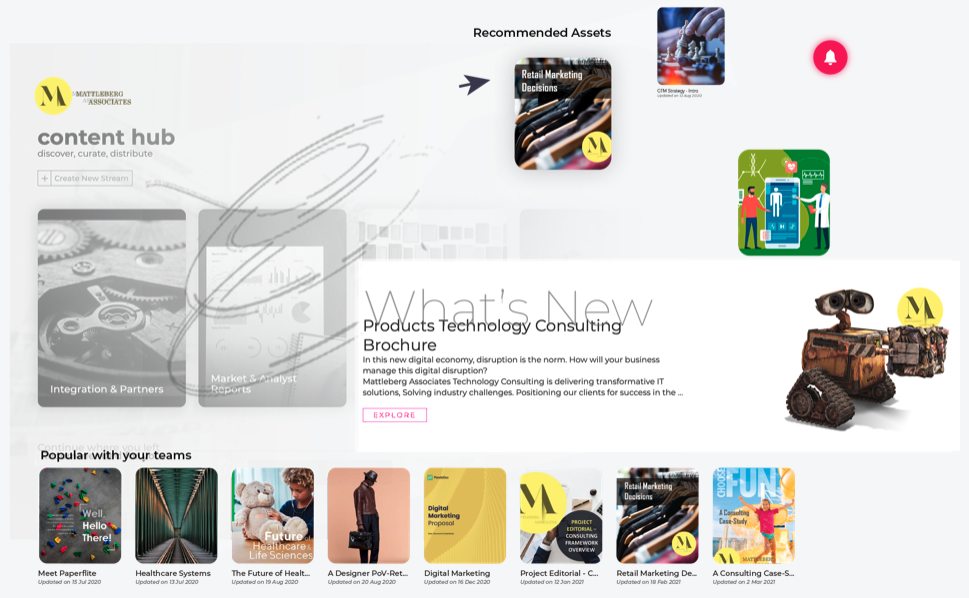
In this case, content organization will could look like having each piece of content tagged based on it’s type, format, and audience, and places in folders (could be overlapping but not duplicated, think shortcuts on Google Drive) so that the right people have access to the content and they are able to find them irrespective of how they search for it.
I doubt we made that seem less intimidating. Don’t worry! We’ve got a few tips and tricks and best practices that will help you declutter your content goldmine in no time.
Why is content organization important?
But before that, why do you need to start organizing your content better?
Say your content team is producing content for marketing, sales, product, among others and you just keep storing them on a drive, chances are your content team is constantly bombarded with access requests or requests to find, create, or update content. Lack of a centralized repository will also increase the chances of content duplication or sharing of out-dated content
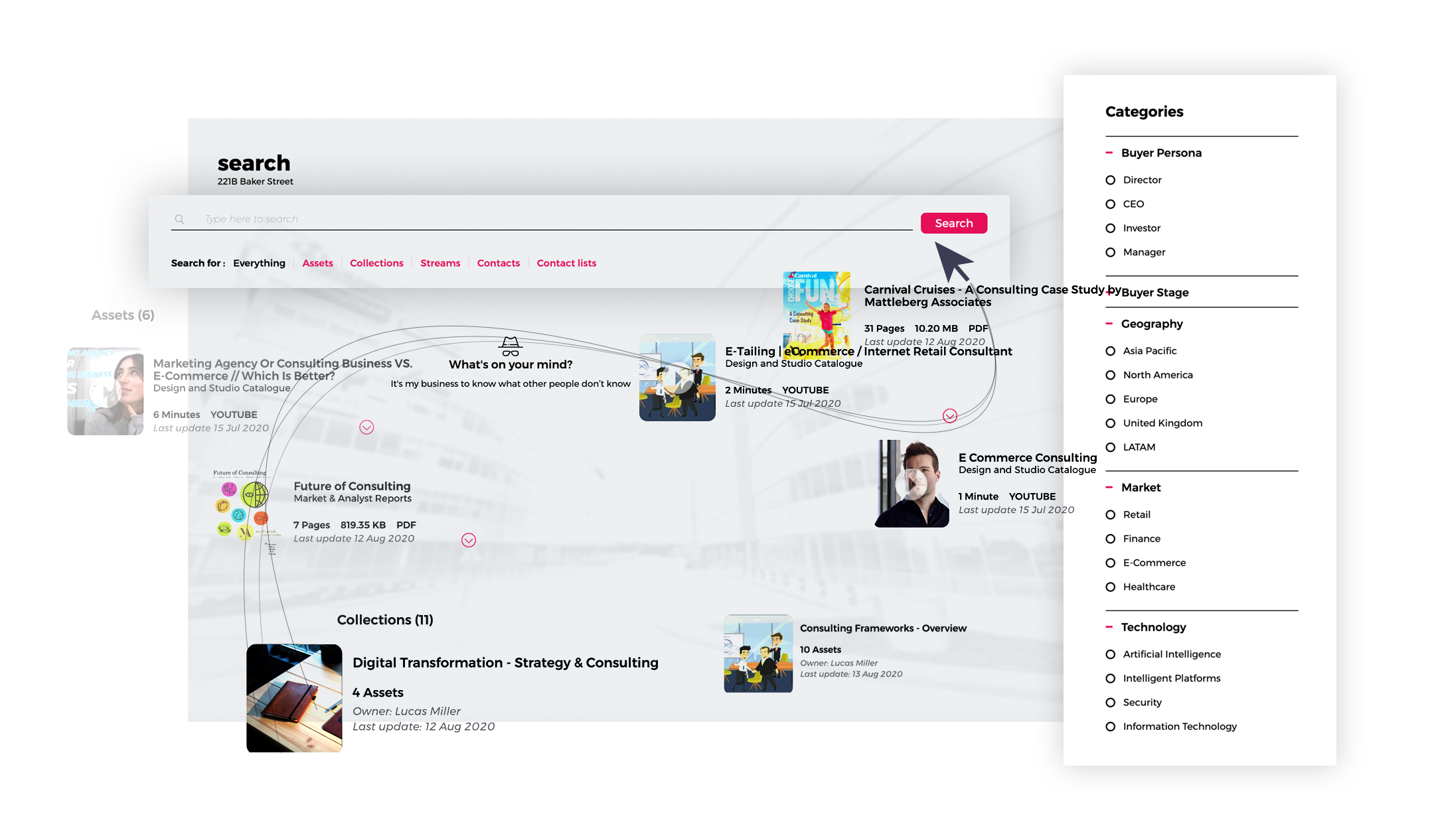
Organizing all of your company's content can create tangible impact by:
Optimizing content creation: When your content is well organized, you will be able to get a comprehensive view of all your content assets. This will in turn enable you to identify gaps, track performance, and make data-driven decisions to improve your content creation and marketing efforts.
Making content easily accessible: Having your content well organized will help you and your stakeholders easily locate and access content without having to reach out to the content team. You’ll also be able to streamline access based on user groups and protect sensitive documents.
Maintaining consistency: When your content is well organized, it’s easier to maintain consistency in branding, messaging, and style across all content types, channels and platforms. This ensures that your company presents a unified and professional image to your audience.
Enabling Collaboration: A streamlined content repository facilitates collaboration among team members, departments, and external stakeholders. Everyone can work from the same centralized content repository, making it easier to share ideas, provide feedback, and collaborate on projects.
Improving Scalability: As your company grows, having a well-organized content management system makes it easier to scale your content operations. You can efficiently onboard new team members, expand into new markets, and manage a larger volume of content without sacrificing quality or consistency.
Organizing all of your company's content is essential for maximising efficiency, maintaining consistency, fostering collaboration, and ultimately achieving your content marketing goals. It lays the foundation for a successful content strategy and contributes to the overall success of your business.
How to organize your content?
Or rather we’ll tell you how we do it at Paperflite and you can take what you think works best for your business.
We follow a tiered structure to organize our content. It goes something like this:
Tier 1: Based on core themes
First we organize content based on core company themes like About Us, Product documentations, Sales Collaterals, Marketing content, Integrations, Onboarding, competitors, reports, etc. This tier is generic and applies to everyone.
Tier 2: Based on purpose or audience
Specific business units can have content separately tiered for them, where it becomes more granular segments - We then further tag content based on the industries, purpose of the content, format of the content, etc. We do this by tagging them with all the relevant information like hashtags (#PDF, #CaseStudy, #ClientName) keywords, descriptions etc.
Tier 3: For specific goals
Our content management system allows us to further create collections with collaterals from different themes or folders without duplicating the asset. This means, everytime the asset is updated, it’s updated everywhere.
These collections can be shared for specific clients, events, or purposes like onboarding or to build partnerships, etc.
CONTENT ORGANIZATION - Best Practices
Here are a few the best practices for organizing content across a business:
1. Use a Content Management System
Content should serve audience needs teams for whom it is intended. Use a content management system to host content. This content management system is a core component of a business’s content strategy that serves as a hub for everybody using content in an organization.
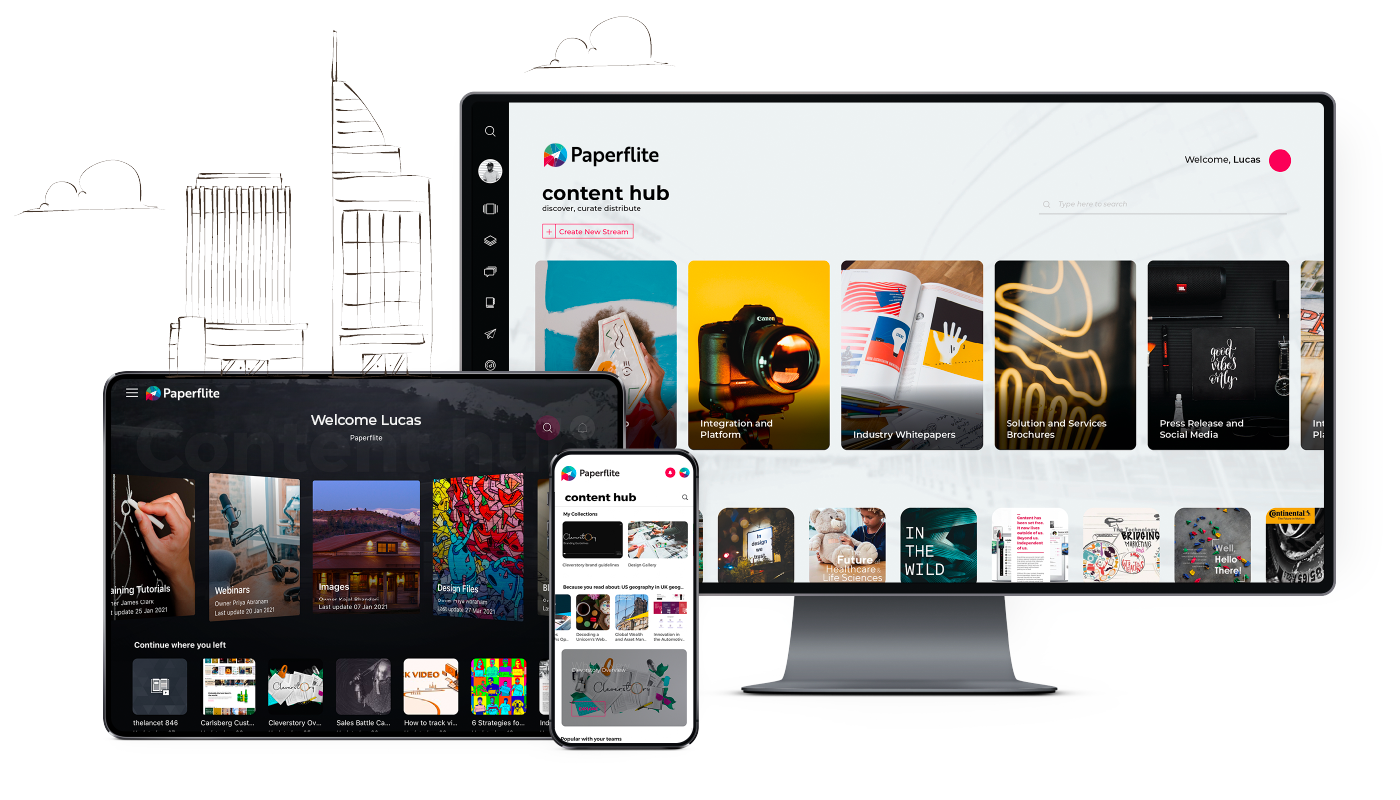
A content management system not only lets you publish, store and manage content, but it can also help you discover content when you need it. For example, sale teams can use a content management system to find content related to their leads and demos. Using a content management system’s nifty features such as ‘drag and drop’ enables you to move content around without breaking a sweat.
Get Granular Information About Every Content Being Sent
2. Organize Content for Discoverability
It is about exploring content churned by a business. A user (internal or external) might not know about a company and could be searching for answers to learn more about their geographical presence, management, investors, and vision. No matter how much content you have, making the content discoverable is key to spreading your brand's message.
Let The Sellers Spend Time Selling, Not Searching
3. Create Groups and Sections
Organize content in different groups and sections. A content marketer at a conglomerate can group content based on different business groups, organization's marketing themes, industries served and more.
Similarly, a content marketer at a small and medium business can group content according to their customer segments or user groups such as millennials, native Americans, elderly citizens, college students, and more.
4. Tag Content Assets
We're not talking about SEO tag optimization in here. This is about meta tags for existing content. When you take meta tags and title tags seriously as part of your SEO strategy, then why not do it for content hosted in a content management system.
Tagging for keywords helps in searching for germane content. A video on growing Chinese consumerism can have tags like #China, #ConsumerSpend, #Consumerism, and #Growth.
This way, content can be found and easily discovered when needed. Content management systems let users tag content for easy findability.
5. Describe Content Artifacts
This feature is critical for a content management system, and a content piece without description is like hotel rooms without numbers on it. Guests don't know which is theirs until someone puts a number on it.
Including a brief description tells a user what a content piece is all about and aids easy discoverability. Description fields could feature HTML links to make them comprehensive.
6. Update Content
When there are newer versions of a content piece, a content marketer should be able to replace them without breaking a sweat. Uploading newer versions of the same content piece can be misleading.
Users might get lost in getting to the appropriate content piece that they need.
7. User Accessibility
Not everybody should have access to all content due to confidentiality issues. Company expansion plans, employee remunerations, customer data, company financials are sensitive and hence restricted to a select audience.
It could lead you to more serious trouble if you do not take accessibility seriously.
While setting up content groups or categories, ensuring access restrictions will prevent content misuse.
Now, let us see a few use cases to organize content across a business.
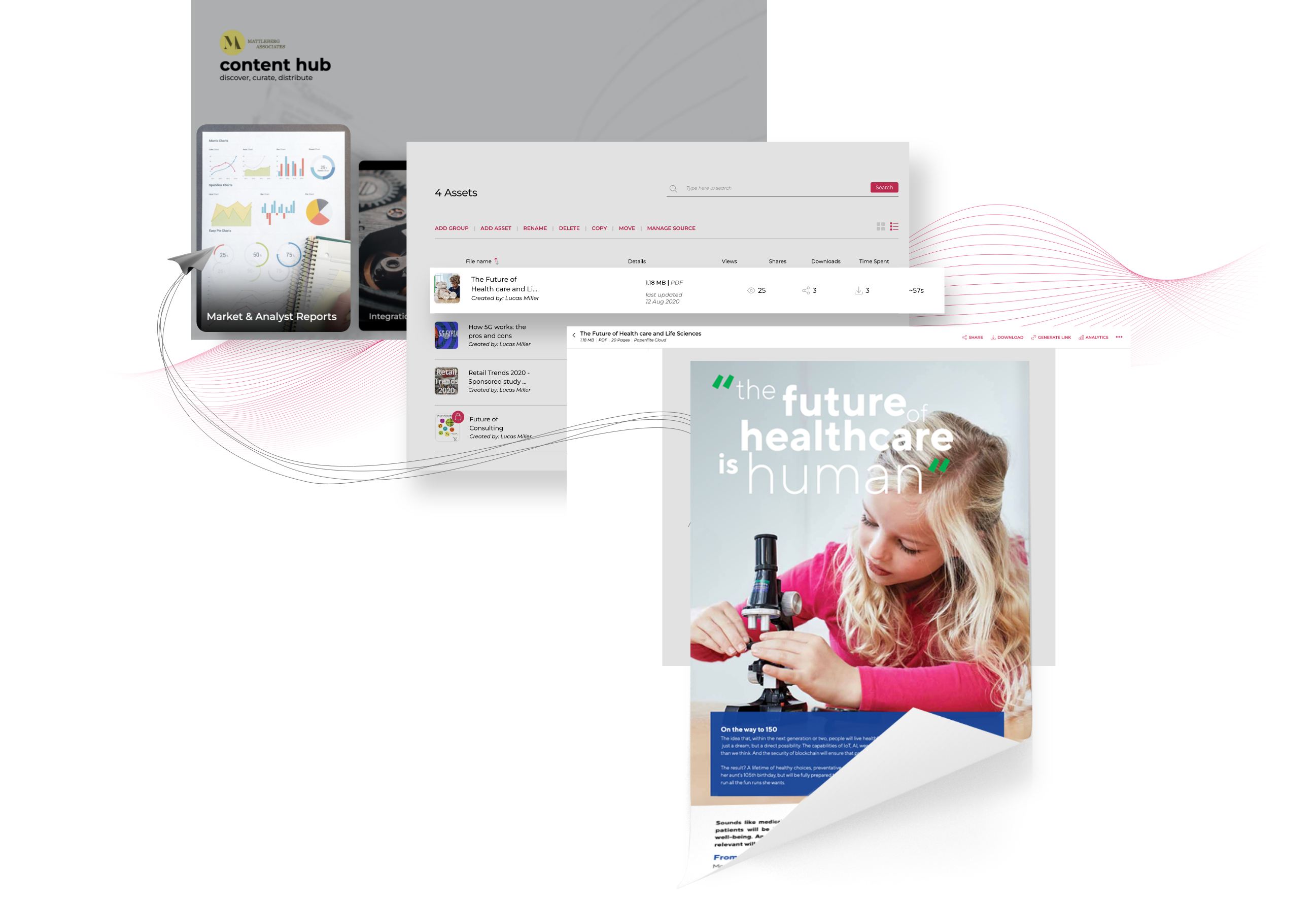
Content Organization Examples in B2B Scenarios
B2B companies must organize their content in proper shape to realize a higher ROI from it, more so when their content has touchpoints with external parties such as customers, vendors, and value-added resellers. For example, sales teams use sales content extensively during conversations with prospects.
In one of our earlier posts titled, The Basics of B2B Sales Collateral, we explained how sales teams use it to convince their customers. The objective of sales collaterals is to provide prospects with the requisite information to help them decide their best option. In this section, let us look at a few use cases of how B2B companies can organize their content.
Use Case #1: ORGANIZING CONTENT FOR AUTOMOBILE COMPANIES
Automobile companies (e.g., Audi) create content for their dealers, customers, and partners. Each of their car models (sedans, coupes, hatchbacks, and more), inventory, technology, and accessories can each have sub-folders created for them.
Content meant for customers and retailers such as videos, brochures, and price lists can have separate repositories. Car companies also have forums/communities that have buyers talking to each other solving problems. Content marketers at automobile companies can dive into buyer discussions to know key topics and help sales reps with relevant content in neat stacks accessible during demos.
Use Case #2: ORGANIZING CONTENT FOR MANUFACTURERS
Large manufacturers such as 3M produce content that covers broader company stories and specific application processes. Along with a good presence on social media, their content strategy weaves along with overall company objectives.
It is imperative for manufacturers to organize content according to corporates (energy, transport, oil & gas), consumers (home improvement, school supplies) business segments (safety, electronics, communications), markets, brands (Avagard, Scotchlite). Organizing content for its intended purpose (educational, informational, recreational) can help improve productivity.
Use Case #3: ORGANIZING CONTENT FOR SMALL AND MEDIUM BUSINESSES
80% of small businesses do not invest in content marketing, which is a mistake. Small and medium businesses (SMBs) find it hard to create content that their customers will love, let alone organize it due to a lack of resources or funds.
But, small businesses who create original content via blogs, short videos, and distribute via social media or niche magazines can host them in a content management system with minimal effort. Since SMBs have much lesser volumes than large enterprises, grouping it can help alleviate pain in the long run.
Use Case #4: ORGANIZING CONTENT FOR EDTech COMPANIES
EdTech companies (e.g., Udemy, Khan Academy, and Kaltura) produce a lot of content for their target audience, which is extremely varied in their tastes and preferences.
It includes school and college students of all ages and working professionals looking to hone their skills in new subjects. As a result, their content varies across different genre, topics, and categories.
Sales reps at EdTech companies use sales collateral to exhibit the utility of their courses to their target audience comprising of schools, universities, institutes, trainers, instructors, and corporate houses. Sales reps targeting these individual customer segments can have their content ready in folders, groups, and themes for use during sales meetings, conversations, presentations, first-time pitches, and campaigns.
Tools That Help with Content Organization
As we mentioned before on best practices it is highly important to implement a content management software to manage the content, it's not just a pretty tool to keep your content organized, but helps in saving time, increasing efficiency and creates transparency.
We have mentioned and evaluated below some of the important tools for content management
Paperflite:

Paperflite is a dynamic content management platform tailored for sales enablement, it helps to streamline sales processes and enhance team collaboration. It focuses on data-driven insights, smart content recommendations, and seamless integration to boost sales efficiency and engagement strategies.
Key Features:
- Easy content upload: Allows you to upload content individually through drag-and-drop, bulk upload content through CSV, or simply connect it to a content source (Google Drive, One Drive, Drop Box, etc) to automatically sync with your Paperflite content hub.
- Centralized content storage: Allows you to manage all your content from one place ensuring your teams have quick access to the latest assets thereby enabling timely responses to prospects.
- Content and Prospect Insights: Tracks content performance and prospect engagement thorugh metrics like number of views, read percentage, shares, downloads, engagement time thereby enabling your sales team to identify key leads and build follow-up strategies.
- AI-Driven Recommendations: Paperflite enables Ai based meta data tags recommendations for assets for easy storage and accessibilty, and it also helps in recommending assets to propects based on their interaction with the assets as for users in the platforms it recommends assets based on the what's popular with the teams.
- Better content sharing: lets you share individual or collection of assets directly from the platform to one or multiple prospects at the same time.
Notion:
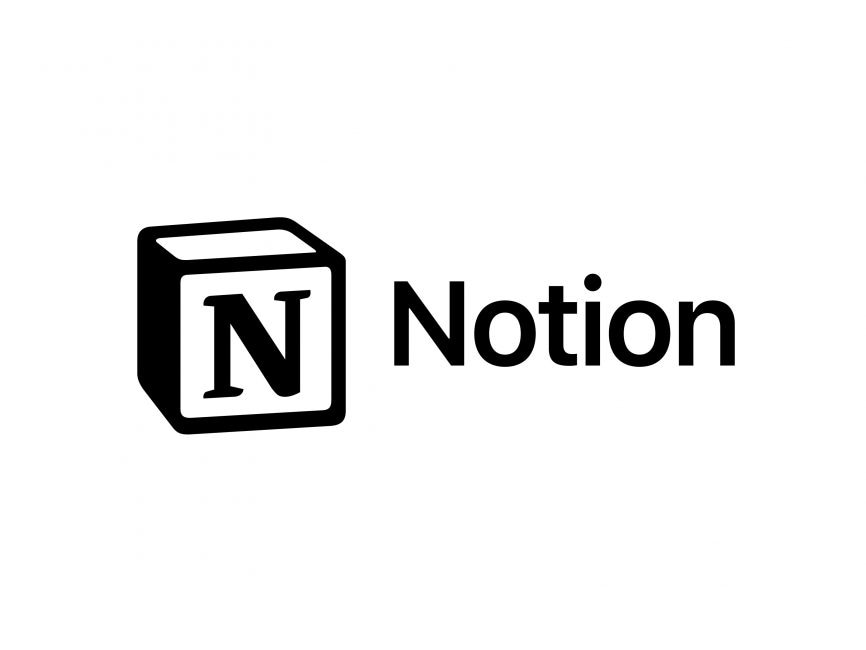
Notion serves as an all-in-one workspace, integrating notes, tasks, databases, and project management tools into a single platform. Its features include customizable templates, integrated workspaces, and real-time collaboration, making it versatile for a variety of organizational tasks.
While it excels in content creation and maintenance with its hierarchical organization and database capabilities, new users may find its wide array of features overwhelming, leading to a steep learning curve. Despite lacking native AI integration, Notion supports third-party AI tools through integration.
A notable use case is Loom, which utilized Notion for enhanced project management and documentation, leading to improved team efficiency.
CoSchedule:

CoSchedule is a marketing platform designed to consolidate various marketing activities such as content management, social media scheduling, and more. It provides a unified calendar, headline analyzer, and an AI content assistant among other features, supporting the entire content lifecycle.
However, the platform's breadth can be daunting for smaller teams, and its cost might be prohibitive for those on a tight budget.
CoSchedule includes AI-powered tools like Hire Mia, aiding in content optimization. Evernest's case study illustrates CoSchedule's benefits, where the company managed to streamline communication and workflow effectively, resulting in a significant increase in project completions.
Outreach:

Outreach serves as a sales content management tool by centralizing all sales materials for easy access, enabling the personalization of outreach efforts to increase engagement.
It also helps in providing insights into how well different contents perform, automating the distribution of materials to save time, ensuring seamless integration with other tools for a cohesive workflow, facilitating team collaboration on content creation, and maintaining compliance and consistency across communications.
This streamlines sales processes, making outreach efforts both more efficient and effective.
Struggling to manage sales content?
CONTENT ORGANIZATION: CONCLUSION
If you’ve worked in sales or marketing teams, there is a high chance that you have seen content rattling around. Our customers often tell us feeling helpless about it. However, organizing content on an ongoing basis helps to align with your content strategy and derive greater value.
